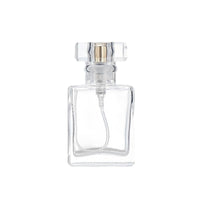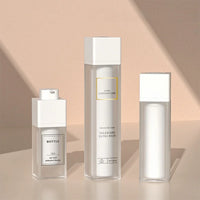Cart
Search
-
-
Exploring the Bes...
Mar 26, 2025 -
What Is the Trave...
Mar 07, 2025
Archive
- April 2025
- March 2025
- February 2025
- January 2025

HDPE vs. PET: Comparison and Application of Plastic Materials
Plastics are ubiquitous in everyday life, from beverage bottles to packaging materials. Plastics are indispensable to modern manufacturing because they are lightweight, durable and cost-effective. Among the many types of plastics, high-density polyethylene (HDPE) and polyethylene terephthalate (PET) stand out. This article will take an in-depth look at the properties and applications of these two materials and their importance in modern manufacturing.
HDPE: The Many Faces of High Density Polyethylene
HDPE is a thermoplastic manufactured from petroleum by-products and is known for its high molecular weight and low side-chain density. The material's molecular chains are tightly arranged to form a crystal-like structure, giving HDPE its higher density and crystallinity. the typical density of HDPE ranges from 0.933 to 1.27 g/cm³, which makes it stronger, less elastic, and more resistant to deformation under load than many common polymers.
Areas of Application
HDPE is widely used for packaging household chemicals such as wet and dry detergents. It is also used to make caps/closures for low-density polyethylene (LDPE) bottles and PET bottles for water and carbonated beverages.
PET: The Transparent World of Polyethylene Terephthalate
PET is a widely used polyester polymer, often derived from petrochemical feedstocks. It is popular with the manufacturing industry for its strength, toughness and relatively low cost.PET has a wide range of applications in several areas, including textile fibers, clear or colored containers for food, liquids and carbonated beverages, packaging for vacuum-formed products, and injection molding and extrusion as an engineering plastic.
Alternative Materials
As environmental awareness increases, alternative materials to HDPE and PET are gaining attention. For example, bio-based alternatives PEF (polyfurylate), PA (polyamide, nylon), and PTT (polytrimethylene terephthalate) are potential options for reducing environmental burdens.
Comparative Analysis of Physical Properties
Strength and Durability
HDPE is known for its high tensile strength, which makes it suitable for withstanding large amounts of force without breaking, making it ideal for heavy-duty applications such as industrial containers and plastic lumber.PET, while not as strong as HDPE, is also quite durable and resistant to puncture and impact damage.
Flexibility and Malleability
HDPE's high-density polyethylene structure makes it very flexible and can be molded into a variety of shapes and sizes, making it ideal for products that need to be extruded, such as shampoo or soap bottles.PET's rigidity makes it ideal for products that need to hold their shape under pressure, such as beverage bottles.
Temperature tolerance and stability
HDPE has a high melting point and can withstand higher temperatures without distortion, making it suitable for hot-fill applications. pet has a lower melting point and is not suitable for high-temperature applications, but has good resistance to low temperatures, making it suitable for refrigerated or frozen products.
Optical Clarity and Appearance
HDPE is usually opaque and comes in a variety of colors, most commonly white or milky white.PET is known for its excellent optical clarity, being a transparent plastic that allows consumers to see the product inside, which is one of the reasons many beverage companies choose PET as a packaging material.
Barrier Properties: Resistance to Gas and Moisture
HDPE has a low resistance to gas and moisture, making it unsuitable for packaging products that may be affected by oxygen or moisture. PET, on the other hand, has excellent barrier properties, with high resistance to gas, moisture, and UV rays, making it ideal for packaged products that need to be protected from the elements.
Final Summary
HDPE and PET each have unique physical properties and applications. Understanding the properties of these materials is critical to making informed decisions in our product design, manufacturing and recycling processes. Whether we choose HDPE or PET, or their alternatives, we are all contributing to a more sustainable and environmentally friendly future.
To learn more about HDPE and PET, or for customized manufacturing services, visit our website or contact one of our representatives for a free, no-obligation quote.
← Older Post
Newer Post →
Contact us
Add: No. 8 Building, Xinchengda Industrial Park, Wuhuan Road, Dongxihu, Wuhan 430040, China
(+86)18963979371
(+86)027-83372627
info@snpacks.com









